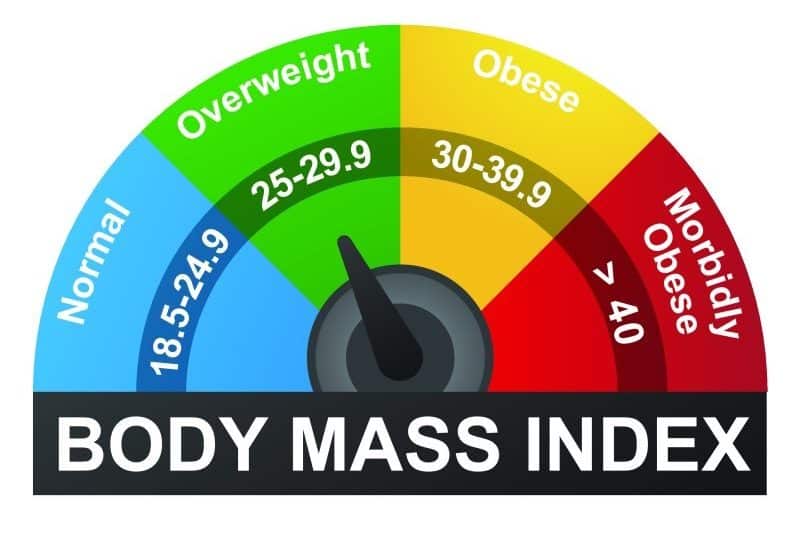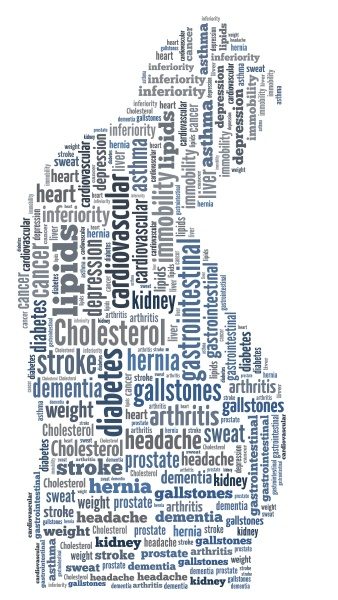Impact of Obesity on Skin Integrity and Wound Healing
What is obesity?

Obesity is defined as a body mass index of greater than 30 kg/m2 and morbid obesity as a BMI of greater than 40 kg/m2. Common health complications related to obesity include type 2 diabetes, hypertension, coronary artery disease, osteoarthritis of weight-bearing joints, respiratory problems, gastroesophageal disease, depression, infertility, and urinary stress incontinence.
What is the impact of obesity on skin integrity?

Obese (bariatric) patients also face numerous challenges in maintaining their skin integrity. Common dermatological conditions include acanthosis nigricans, skin tags, hyperandrogenism, striae distensae, plantar hyperkeratosis, and candidal intertrigo. These health complications and skin integrity challenges also place the bariatric patient at increased risk for surgical complications and delayed wound healing. The risk factors and potential complications increase with the severity of obesity.
The challenges faced by bariatric patients when maintaining their skin integrity may be related to:
- Decreased tissue perfusion and oxygenation. Blood supply to adipose tissue is usually compromised, which diminishes the oxygen and nutrients necessary to prevent breakdown and promote healing. Peripheral vascular diseases are often an important contributing factor due to low tissue oxygen levels. Oxygenation of the bariatric patient is also impacted by a decreased lung volume, exertional dyspnea, obstructive sleep apnea, and obesity hypoventilation syndrome.
- Increased risk of phlebolymphatic disease of the lower extremities. These are more difficult to manage in the obese patient and often lead to uncompensated edema in spite of compression devices. This may lead to tissue breakdown with weeping exudate that progresses to blisters, moisture-associated injury, or open wounds.
- Increased intra-abdominal pressure. Increased intra-abdominal pressure complications often include abdominal surgery site wound dehiscence, gastroesophageal reflux disease, potential for anastomotic leaks, hernia, stress incontinence, diabetes, hypertension, and venous insufficiency.
- Immobility. Common immobility-related complications include skin breakdown, cardiac deconditioning, deep vein thrombosis, muscle atrophy, urinary stasis, constipation, pain management problems, and depression. It also contributes to pulmonary complications such as sleep apnea, atelectasis, and pneumonia with resulting poor tissue perfusion.
- The amount of tissue disrupted to perform surgery. Seromas are more common in surgical cases on bariatric patients as are surgical site infection and incisional dehiscence.
- Pressure injury and moisture-associated skin damage. Increased tissue weight exerting additional forces on dependent tissue on an already compromised vascular and phlebo-lymphatic system adds to the risk of pressure injury. Skin folds trap moisture, and — in combination with friction or shear — result in moisture-associated skin damage and the potential for fungal infection in these areas.
- Poor nutrition. Skin integrity is impacted by adequate nutrition, and complications in the bariatric patient are often exacerbated by nutritional deficits in protein, vitamin, or mineral stores.
- Proper equipment and resources for care delivery. Standard care equipment, such as beds, side chairs, toilets, and lifting aids, are just a few items typically rated for persons less than 250-300 pounds. If the patient exceeds this weight, specialized equipment may be required. Patient and caregiver injury is a concern without proper resources. Specific tasks, such as moving and lifting immobile bariatric patients or proper positioning for operative procedures or wound assessment and care, can seem overwhelming without proper equipment.
How can clinicians help and care for bariatric patients?

With these challenges to skin integrity in mind, it is necessary to plan for the provision of safe and effective assessment and care for the bariatric patient. Obese individuals should receive dignity and respect during care with the same access to technical excellence, accessibility, and acceptability as others. Keen attention to nutritional needs, skin/wound assessment, cleanliness, skin fold assessment/management, perigenital care, odor management, perioperative management, and effective pressure redistribution is an integral component of skin and wound care for the bariatric individual.
To learn about a product indicated for the management of surgical wounds, please visit https://sanaramedtech.com/surgical/celleraterx-surgical/




